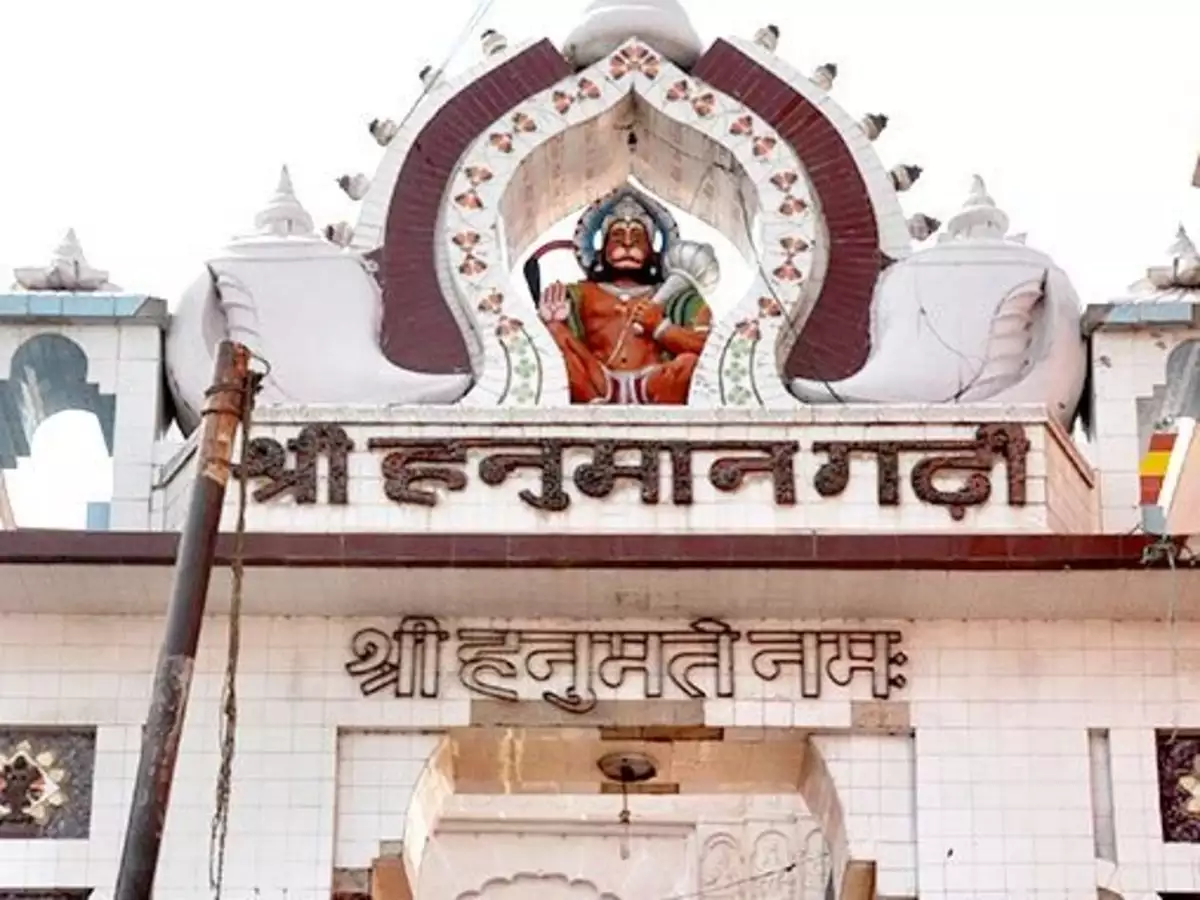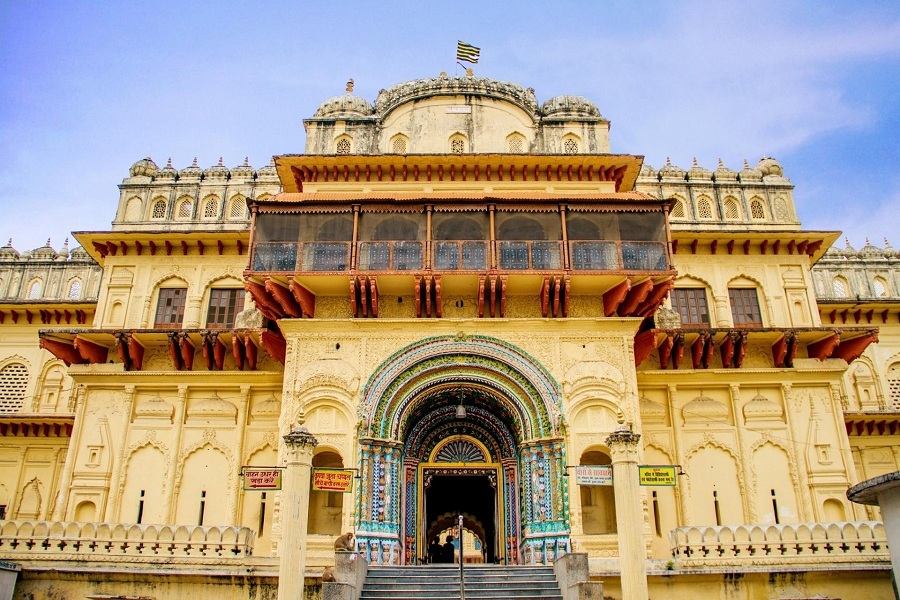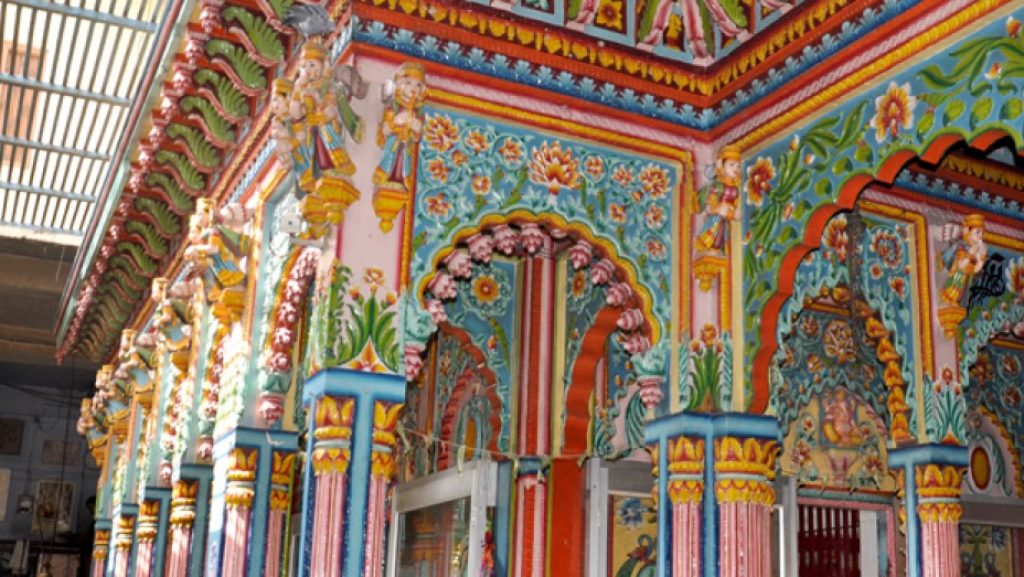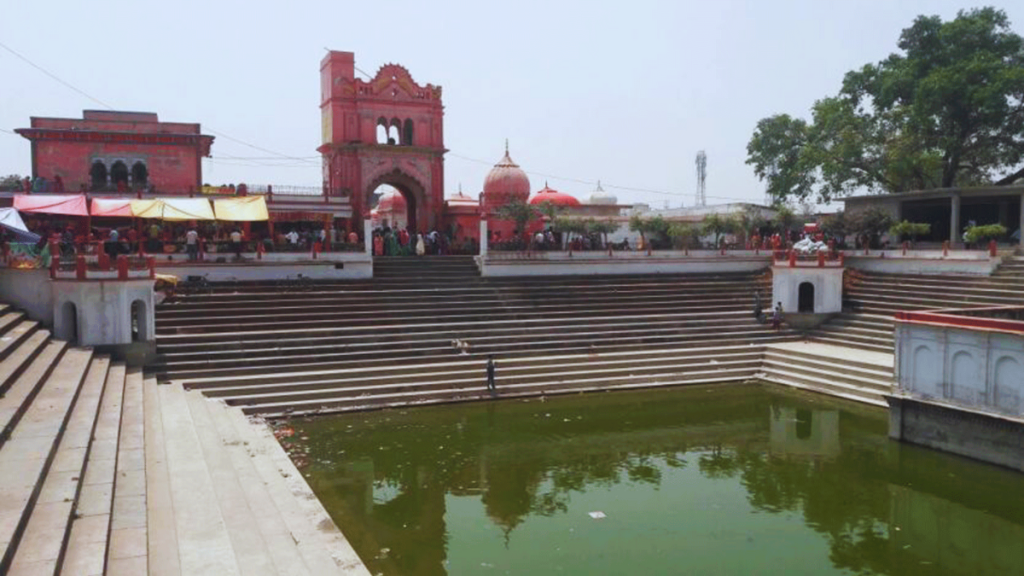Book Your Tour Now

The Hanuman Garhi
Situated in the heart of the town, this temple is accessible via a flight of 76 steps, offering visitors a sense of devotion and tranquility even before reaching its sacred grounds. According to ancient legend, Hanuman resided in a cave here, serving as the guardian of Janmabhoomi, or Ramkot, the birthplace of Lord Rama. The temple’s centerpiece is the beautiful idol of Maa Anjani, with young Bal Hanuman seated lovingly on her lap, symbolizing the nurturing bond between mother and child. This unique depiction of Hanuman as a child is a rare sight, drawing pilgrims and devotees seeking blessings of strength, protection, and devotion. Surrounded by serene natural beauty, the temple provides a spiritual retreat for visitors. It is not just a place of worship but also a significant historical and cultural site, adding to the rich religious heritage of the region.

Kanak Bhawan
This renowned temple in Ayodhya holds a special place in mythology and devotion. According to legend, it was gifted to Sita by her mother-in-law, Kaikeyi, after her marriage to Lord Rama. The temple is considered the private palace of Lord SitaRam, symbolizing their divine union and domestic bliss. Inside, the temple features beautifully crafted statues of Sita and Rama, along with depictions of other key figures from the Ramayana. It stands as a testament to their eternal bond and serves as a significant spiritual destination for devotees seeking blessings and inspiration from the divine couple.

Ramkot
The primary place of worship in Ayodhya is the ancient site of Ramkot, located on elevated ground in the western part of the city. This sacred citadel is a focal point for devotees, drawing pilgrims year-round. However, its significance peaks during Ram Navami, the auspicious day marking Lord Rama’s birth. Celebrated with immense fervor in the Hindu month of Chaitra (March–April), Ram Navami attracts thousands of devotees from across India and abroad. The atmosphere comes alive with vibrant rituals, devotional songs, and grand processions, making Ramkot a spiritual and cultural hub during this time.

Nageshwarnath Temple
The Nageshwarnath Temple, steeped in legend and devotion, is believed to have been established by Kush, the son of Lord Rama. According to the tale, Kush lost his armlet while bathing in the sacred waters of the Saryu River. The armlet was retrieved by a Nag-Kanya (serpent maiden) who, captivated by Kush’s charm, fell in love with him. In gratitude and devotion, Kush built the Nageshwarnath Temple, dedicated to Lord Shiva, as a symbol of their connection and as a place of worship for the Nag-Kanya. The temple holds great significance in Ayodhya, attracting pilgrims and devotees who come to seek blessings and immerse themselves in its rich historical and spiritual heritage.

Chhoti Devkali Mandir
Chhoti Devkali Mandir is a revered temple dedicated to Goddess Ishani, an incarnation of Goddess Durga. According to mythology, Goddess Ishani is considered the Kuldevi (family deity) of Sita. This temple holds a special place in the hearts of devotees, especially those seeking the blessings of the divine mother for protection and prosperity. It is an important spiritual site in Ayodhya, drawing visitors who come to honor the goddess and connect with the rich cultural and mythological heritage associated with Sita and Lord Rama.